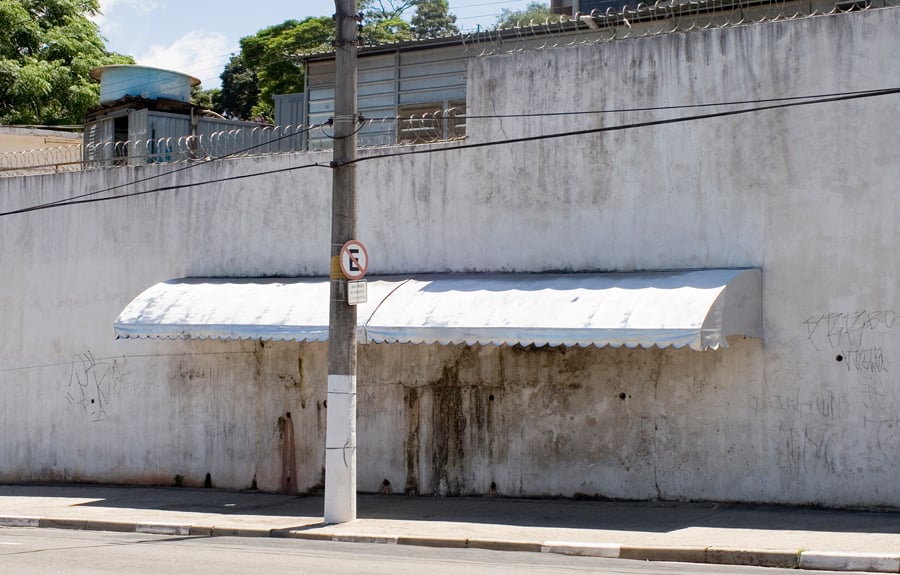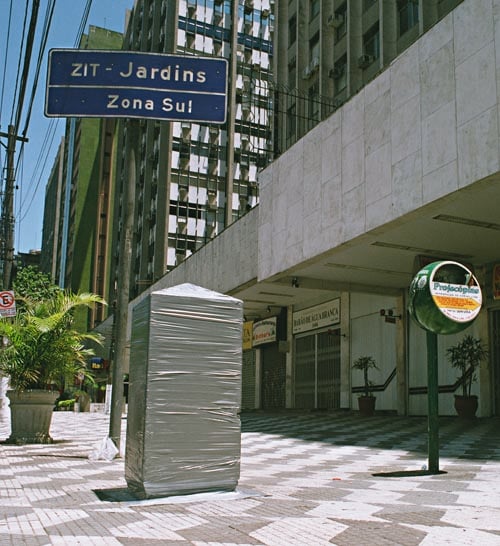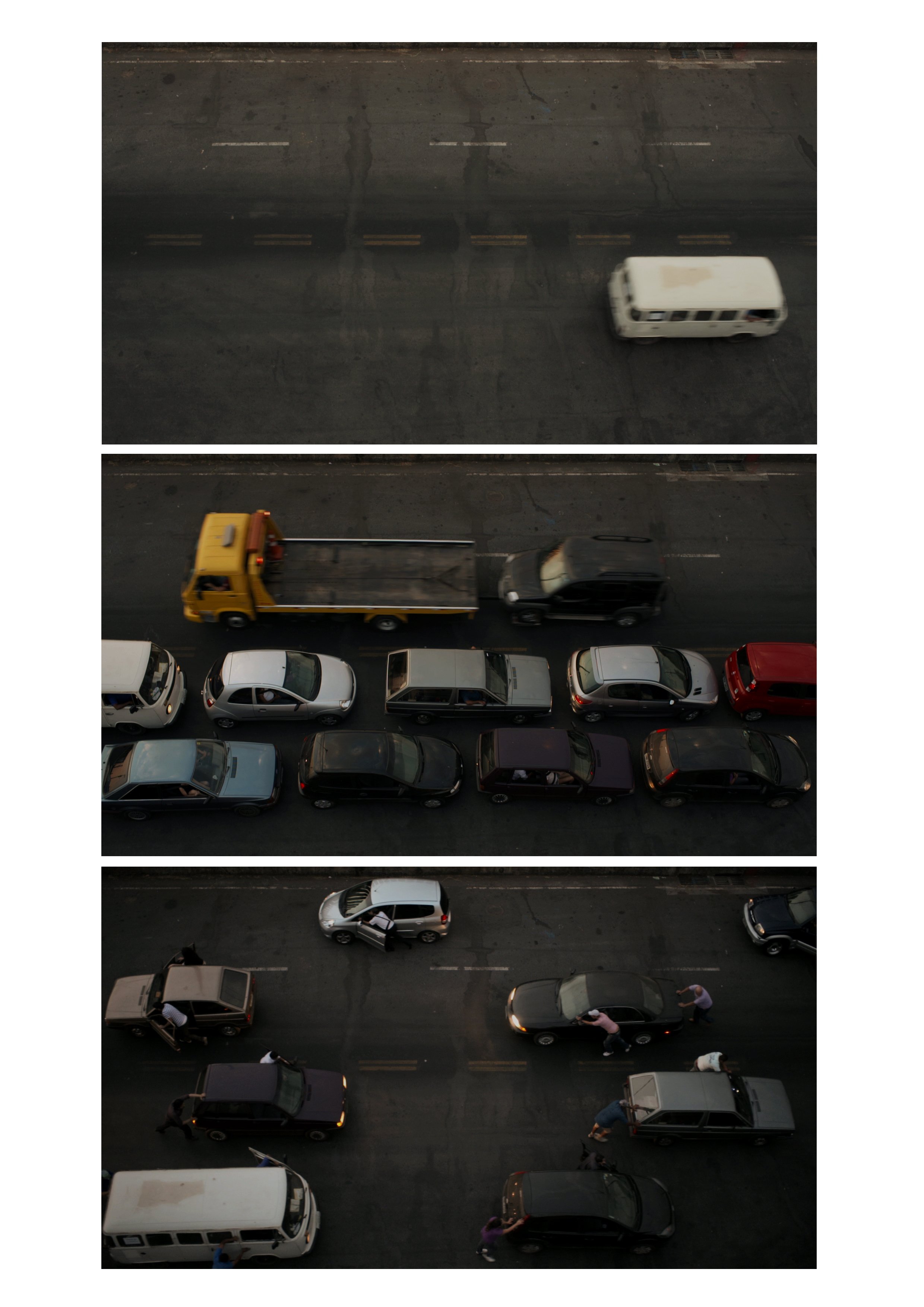De sino à sina (From Bell to Fate)
2018 - Installation (Installation)
5:20 minutes (looped)
Carla Zaccagnini
De sino à sina (From Bell to Fate) is a six-channel sound installation by Carla Zaccagnini exploring the relationship between modern Brazil and its colonial past. The sound installation is made from a recording of the bell at Capela de Nossa Senhora do Rosário dos Homens Brancos, a Baroque-style chapel that is one of the first chapels in Ouro Preto (previously Vila Rica) in the region of Minas Gerais. The work references the execution of José da Silva Xavier (1746-1792), also known as “Tiradentes”. He was a dentist and military officer, and one of the twelve people from Ouro Prieto, in Minas Gerais, who led the first attempt to gain independence from Portugal. Their revolt became known as the movement of the “Inconfidentes”. Accused of conspiring against the Portuguese Crown, Tiradentes was sentenced to the gallows and deprived of his Christian rights, which included burial and the tolling of a bell. He was dismembered instead, and rumor has it that, despite the interdiction, the bell of the Capela de Nossa Senhora do Rosário dos Homens Brancos in Ouro Prieto tolled. In a symbolic political move, that very same bell would sound years later, in 1960, during the inauguration of Brasília, the futurist capital of Brazil, turning Tiradentes, the conspirator, into a national hero. Zaccagnini was compelled by the symbolic sound of the bell, for it resisted the capital punishment of Tiradentes, and it had also uplifted the hopes of modernity in the birth of Brasilia. Additionally, a subtle projection in the bell sound are the hundreds of thousands of indigenous Indian and African slaves who were employed to undertake the physical toil of recovering the gold, an aspect of the Brazilian gold rush that differentiated it from the other prominent rushes. Yet, De sino à sina not only alludes to the evolution of the figures of the slave, the traitor, and the martyr in the formation of Brazilian history and the construction of the nation’s identity. While the story of the bell is deeply and directly connected to the Catholic faith and power, the sudden African rhythms in the work produce a new sound. The work thus explores the influences of African culture that permeated the country with the slave trade and speculates about the way they have infiltrated its white Christian counterpart as a form of resistance. The work responds with utmost sharpness to the need of creating a ritual atmosphere that is not necessarily religious, but that still generates a sense of community.
Carla Zaccagnini combines historical research with a variety of media and techniques. From drawing to installation, performance, text, video, exhibition curating, and written criticism, Zaccagnini investigates cultural exchange and social displacement, as well as the transformation of the symbolic value of images in contemporary culture. Zaccagnini views these multiple activities as mutually constitutive forms of inquiry that overlap to form a holistic, conceptually driven art practice. Often working by recontextualizing existing objects and ideas, she prompts viewers to question the limitations of language and representation, the fallibility of perception, and the construction of knowledge. Zaccagnini is part of a generation of Latin American artists that have addressed the political history of the continent and, more specifically but not exclusively, the history of Brazil. Having delved into the history of slavery, the influence of European aesthetics in Brazilian art, and its assimilation by indigenous cultures, Zaccagnini uses art as a conceptual instrument to undo the construction of history and the production of knowledge.
Colors:

© » KADIST
Marcelo Cidade
2010Adição por subtração 4 (Addition by Subtraction, 2010) is an intervention into the white cube with both beautiful and intimidating results...

© » KADIST
Erika Verzutti
2015Made in cast bronze, Two Eyes Two Mouths provokes a strong sense of fleshiness as if manipulated by the hand of the artist pushing her fingers into wet clay or plaster to create gouges that represent eyes, mouths and the female reproductive organ...

© » KADIST
Rivane Neuenschwander
2007Mapa-Mundi BR (postal) is a set of wooden shelves holding postcards that depict locations in Brazil named for foreign countries and cities...

© » KADIST
Marcelo Cidade
2006This series of photographs reflects Marcelo Cidade’s incessant walks or drifting through the city and his chance encounters with a certain street poetry like the Surrealists or Situationists before him...

© » KADIST
Rodrigo Braga
2009Braga’s video work Provisão (2009) opens with a still shot of a clearing in a forest, shoots of grass emerging from a muddy brown patch of seemingly dry and barren earth...

© » KADIST
Marcelo Cidade
2010Marcelo Cidade’s sculpture Abuso de poder (Abuse of Power, 2010) is a mousetrap elegantly crafted in Carrara marble...

© » KADIST
Valeska Soares
2012Relying on repetition and repurposed materials, Soares works to interrogate time—its measurement, its passing, and its meaning...

© » KADIST
Cildo Meireles
1975Meireles, whose work often involves sound, refers to Sal Sem Carne (Salt Without Meat) as a “sound sculpture.” The printed images and sounds recorded on this vinyl record and it’s lithographed sleeve describe the massacre of the Krahó people of Brazil...

© » KADIST
Fernanda Gomes
2013For this floor based work, Gomes has taken two lengths of bamboo and tied them together using linen thread...

© » KADIST
Alexandre da Cunha
2005His Deck Painting I recalls the simplistic stripes of conceptual artist Daniel Buren, or the minimal lines of twentieth century abstract painting, but is in reality a readymade, fashioned from repurposed fabric of deck chairs...

© » KADIST
Alexandre da Cunha
2005Glaze (Savana) (2005) is an assemblage of found materials: a car wheel, a tire, and a wooden plinth of the type traditionally used to display sculpture...

© » KADIST
Runo Lagomarsino
2020On Fire by Runo Lagomarsino comprises twenty pieces of parchment, each of which has had the contours and map of Brazil burned in stages...

© » KADIST
Marcelo Cidade
2006This series of photographs reflects Marcelo Cidade’s incessant walks or drifting through the city and his chance encounters with a certain street poetry like the Surrealists or Situationists before him...

© » KADIST
Runo Lagomarsino
2020Yo también soy humo (I am also smoke) is a 16mm film that has been digitized to video...

© » KADIST
Clarissa Tossin
2012In Fordlândia Fieldwork (2012), Tossin documents the remains of Henry Ford’s rubber enterprise Fordlândia, built in 1928 in the Brazilian Amazon to export cultivated rubber for the booming automobile industry...

© » KADIST
Cinthia Marcelle
2012Cinthia Marcelle’s video work Automóvel (2012) re-edits the mundane rhythms of automotive traffic into a highly compelling and seemingly choreographed meditation on sequence, motion, and time...




